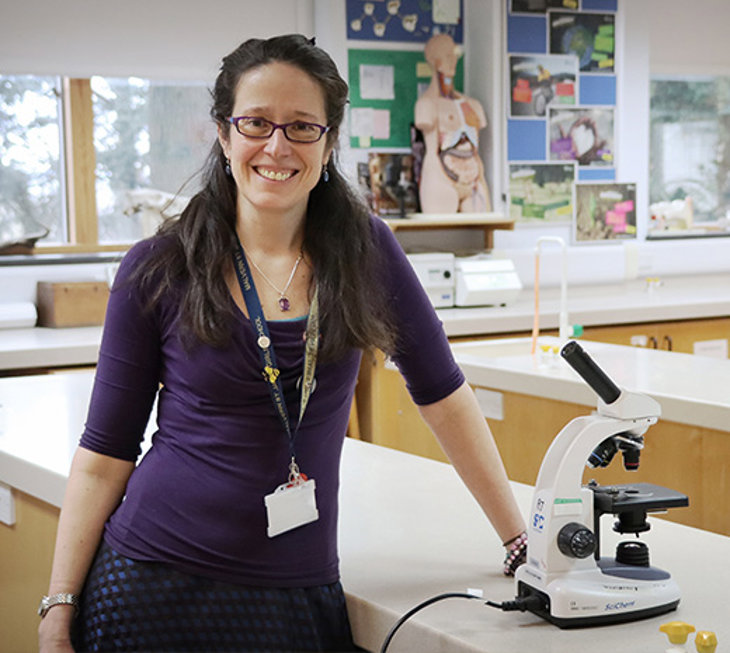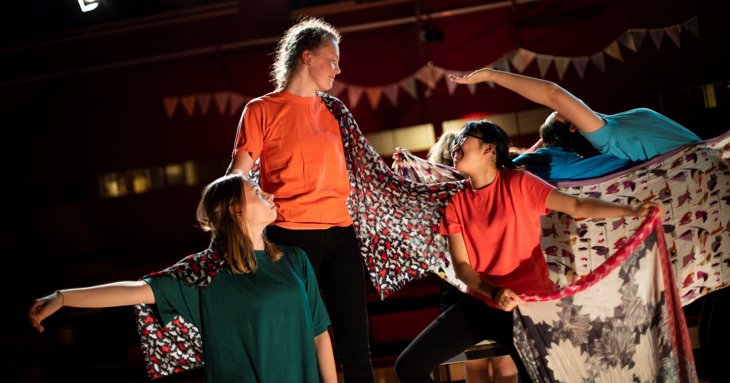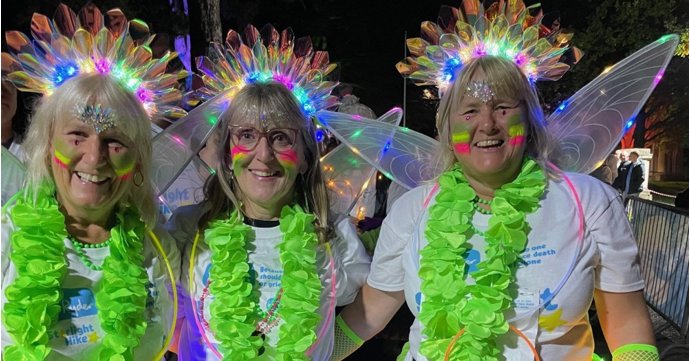Giving creative and scientific subjects equal weight, there’s a growing emphasis on STEAM as an educational discipline – and it’s something that leading independent girls’ school, Malvern St James, is prioritising this year, both in and out of the classroom.
Inspired by this more holistic approach to learning, SoGlos caught up with Isla Whitmore, the head of STEAM at Malvern St James Girls’ School, to find out more about its innovative approach to integrating the arts and science.
About the expert – Isla Whitmore, head of STEAM at Malvern St James Girls’ School

Isla Whitmore is the head of STEAM at Malvern St James Girls’ School, leading a new initiative to give the arts, humanities and scientific subjects equal weighting both in and out of the classroom – with the aim of creating well-rounded, critical thinkers who can work collaboratively.
Just over the Worcestershire border, Malvern St James is a leading independent day and boarding school for girls aged four to 18. With a dedicated minibus service that has routes in and around Gloucestershire, it’s a popular choice for local families seeking an enriching education for their daughters.
Most people will recognise the term STEM – but what is STEAM, and how does it differ?
STEAM stands for Science, Technology, Engineering, Arts and Maths, and incorporates the arts into the traditional teaching and understanding of STEM subjects to broaden the reach and outlook of pupils.
Rather than a focus on a ‘binary science versus arts’ decision, the aim of STEAM is to encourage pupils to give equal weight to all subjects, so that they can pursue a wide range of interests. It recognises the importance of creativity, intuition, imagination and exploration in order to succeed as a well-rounded pupil, and generates enthusiasm in and interest for cross-curricular opportunities and activities.
It also acknowledges that the world is rapidly changing and that today’s pupils need to be able and willing to draw on a wide range of skills to rise to those inherent challenges.
What are the benefits of combining the arts with science, technology, engineering and mathematics?
STEAM seeks to emphasise that there is no division between the old right-brain/left-brain definitions. We make the most of our learning if we consider it as a holistic environment, which encourages creativity, discussion and innovation – and uses the breadth of our knowledge and logical thought in creative and exciting ways.
Creative thought is at the heart of making scientific progress; often, those who are successful step away from the traditional scientific process and bring a fresh approach to a problem. We only need to consider the work of Dr Sarah Gilbert and Dr Catherine Green in developing the AstraZeneca vaccine for Covid-19. They had to make swift decisions and develop creative approaches to both the method of development and the roll-out of the vaccine trials.
Being good communicators, innovators and intuitive thinkers meant that they could adapt swiftly to a range of challenges. We believe that today’s pupils need to be able to think on their feet and to access, examine and use knowledge and skills from different areas of study.
What arts provisions are offered as part of a STEAM education, and is each discipline valued equally?
At Malvern St James, the arts provisions we are looking at are art; design and technology; music; psychology; and drama. Each discipline is valued equally and we are delighted to have pupils enjoying a range of subjects at A-Level, pursuing art and physics, or music and biology, or chemistry and psychology or English.
Why is Malvern St James championing STEAM in girls’ education?
The aim of STEAM is to channel pupils’ enthusiasm for their individual subjects into a broader appreciation of the links between them. We don’t want them to be categorised into one particular area; we encourage them to demonstrate innovation, creativity, technical and mathematical skills, digital literacy and scientific knowledge.
Malvern St James is championing STEAM in girls’ education because we also see it as a way to develop critical thinkers who can work collaboratively. Education needs to be increasingly outward-looking to connect with meaningful and useful adult life and our rapidly changing world needs enthusiastic polymaths who are ready to work in an adaptable, flexible and collaborative manner. This is certainly what employers are looking for.
How is STEAM taught in practice at Malvern St James?
There are multiple pathways in which we incorporate STEAM into life at Malvern St James: extra-curricular, cross-curricular and supra-curricular.
The first means adding extra activities outside normal school hours; the last means extension work and additional opportunities for pupils to read and explore their interests beyond the confines of the curriculum covered in lessons; and the cross-curricular pathway asks staff and departments to consider ways that we can all work together and remodel the curriculum to incorporate STEAM into our daily lesson delivery.
As this is a new initiative, launched this year, we have approached it steadily and carefully, incorporating new opportunities into the school experience but also considering those already available to pupils.
Can you give us some examples of extra-curricular activities that promote STEAM?
We have added a large number of trips this year – taking our A-Level scientists to Cheltenham Literature Festival, for example, as well as to a talk at Malvern Theatre by forensic pathologist, Dr Richard Sheppard.
We took our Year 7 and 8 pupils to the Malvern Festival of Innovation where they gained insight into the James Webb telescope; the Bloodhound project; and coding, using Raspberry PI, which resulted in a team of Year 7 pupils winning a competition to visit Mazak in Worcester, to gain understanding of the manufacturing processes behind machine tools and laser machines.
Year 9 pupils have visited the Pitt Rivers and Natural History Museums in Oxford, where they gained an understanding of colonialism and the importance of acknowledging this in our appreciation of artefacts that had been collected from around the world.
They also visited RAF Cosford in Shropshire where they were given insights into the role of the RAF in the Battle of Britain, explored the hangars filled with decommissioned aircraft, learned about the Cold War and designed rockets – this was an example of drawing history, physics, and design and technology into one immersive trip.
Plus, a team of Year 8 pupils attended an IET Faraday Challenge event, part of a national competition where they had to work in a team to tackle a specific real-world challenge and design a prototype to resolve it.
How about supra-curricular and cross-curricular?
As part of our supra-curricular offer, through our Academic Scholars’ programme, our head of academic enrichment has encouraged pupils to enter the ISA STEAM competition and Teen Tech. Our head of computing is championing both CyberFirst and CyberDiscovery with our pupils and, in British Science Week 2022, will be running the Raspberry PI mission Zero Challenge with our Year 8 cohort.
All teachers encourage and promote wider reading with their pupils and identify extra lectures and online sessions. Our geography department promoted an online lecture with Tim Marshall about his book, Prisoners of Geography; in biology, pupils attended an online tutorial about gene therapy; talks about diversity in research at AstraZeneca; and by a medical doctor about their own career in medicine and a professor at UCL about fertility.
We are looking at bringing more STEAM activities into the school day and seeking ways to bring in new cross-curricular opportunities for learning so that STEAM is steadily embedded into teaching practice.
What benefits have you seen since adopting this style of education for Malvern St James’ students?
Already we have seen that pupils are more willing to volunteer for projects and work collaboratively with others, showing readiness to draw on each other’s skills. This was demonstrated in the Imperial College ‘Science at Heart’ national competition for Year 12 and 13 pupils.
They were tasked with researching a specific heart condition and the treatments currently available, looking at new technologies, developing a concept and then presenting to nine other short-listed schools and a panel of experts from the cardiovascular research team at Imperial College.
Our team came third in this competition and were lucky enough to receive personal feedback from an Imperial College professor.
One reaction from a Year 9 pupil after the RAF Cosford trip really sums up the advantages of STEAM: ‘I got a chance to learn more deeply about history and physics at the same time – out of school.’





















